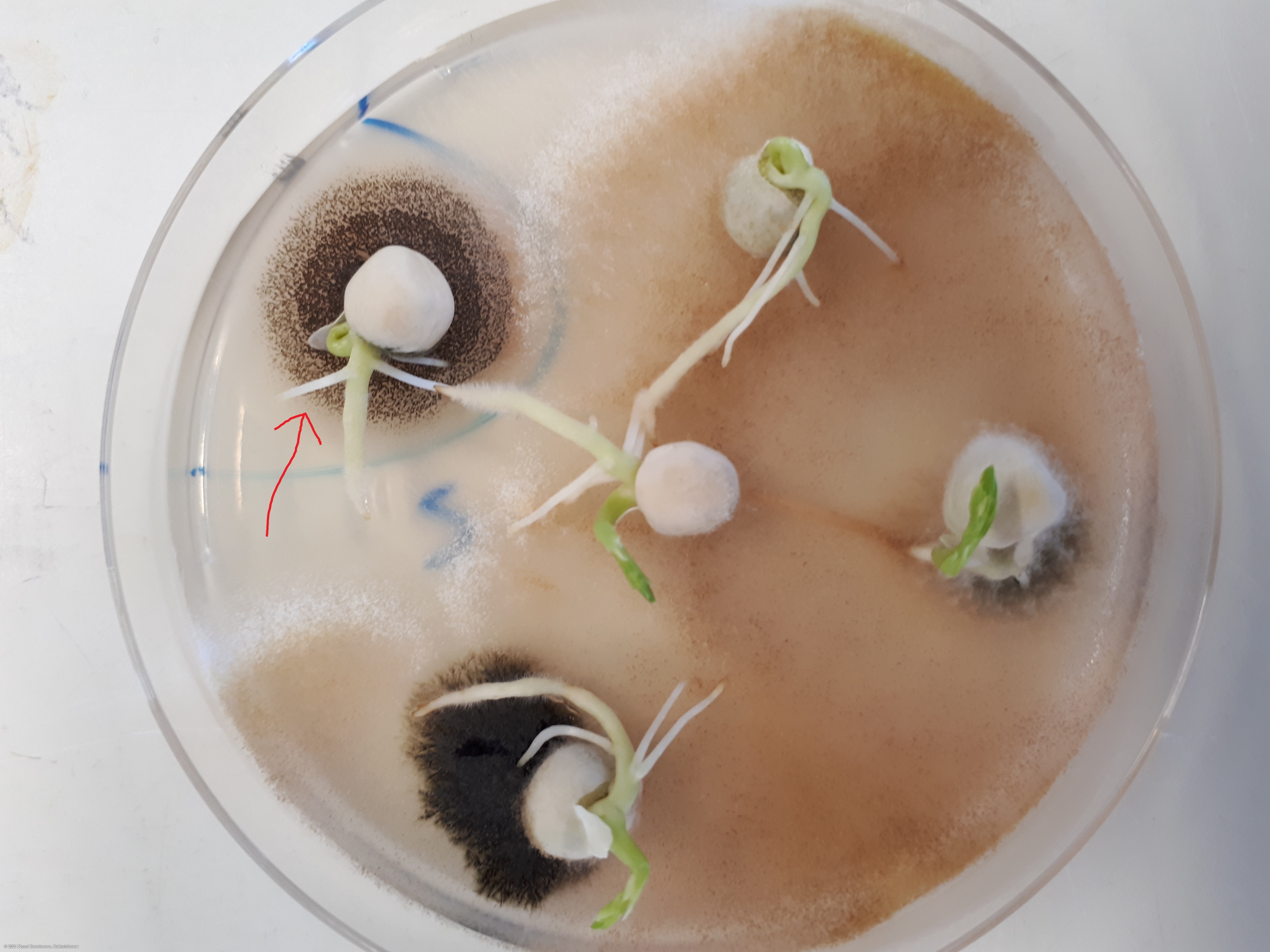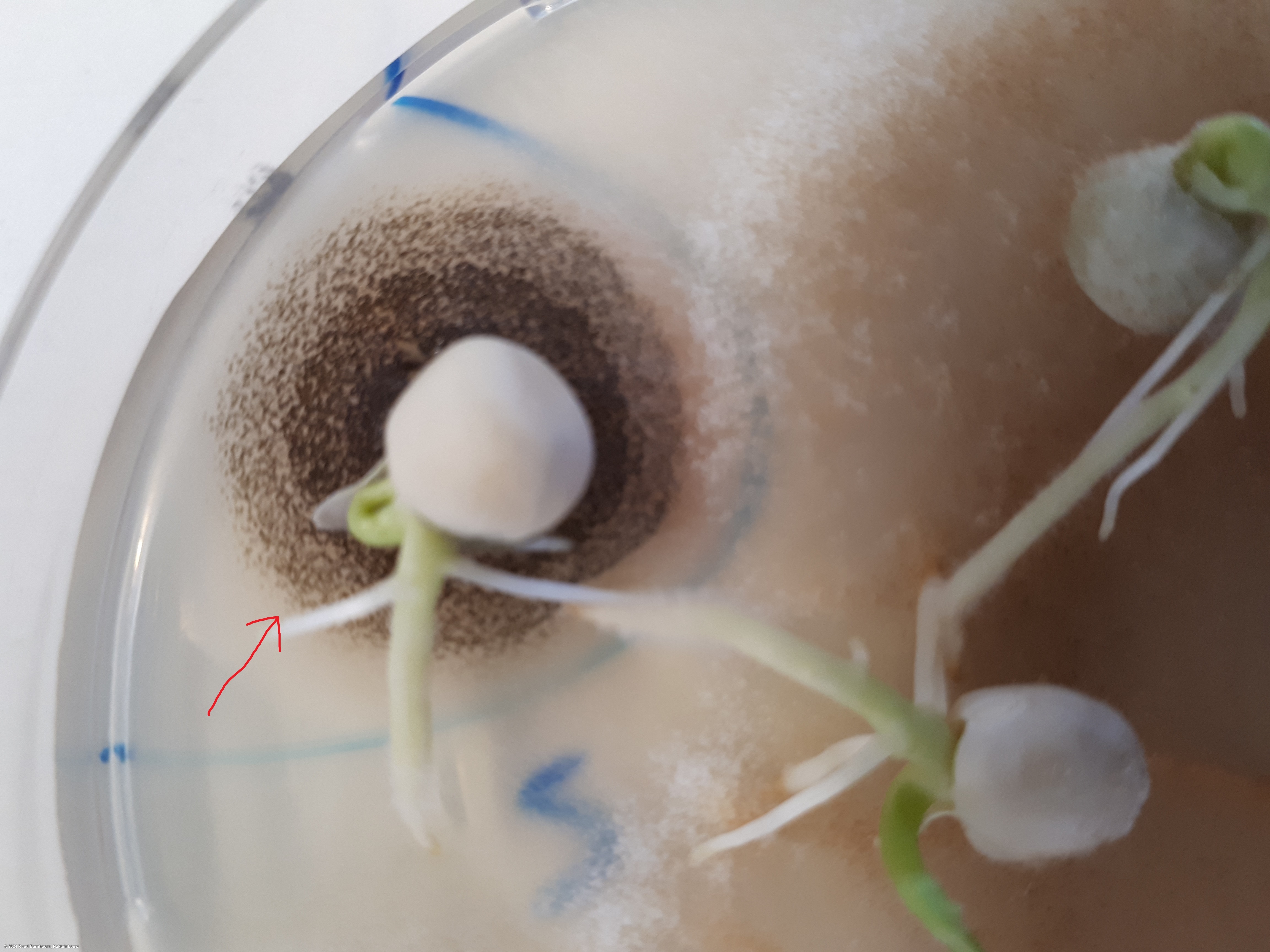Didymella pinodella
Overview
|
Scientific name
|
Didymella pinodella |
|
Genus
|
Didymella |
|
EPPO code
|
PHOMMP |
|
Common name
|
Foot rot |
|
Synonyms
|
Ascochyta pinodella |
Description
Didymella pinodella, previously Ascochyta pinodella, and then called Phoma medicaginis var. pinodella, causes foot rot of peas. Often found co-infecting pea seeds with Ascochyta pinodes and Ascochyta pisi.
From APS Press and CMI description # 518:
Pycnidia are globose and brown or black. Conidia (2-3 x 4.5-8 μm) are smaller than those of D. pinodes, hyaline, 1- or 2-septate and oval-cylindric with rounded edges. Profuse dark chlamydospores are both intercalary and terminal and are borne singly and in chains. Optimal temperatures for pycnidium and spore production on PDA are 18-24C. Light is required for conidial germination. Colonies are dark grey, and many become black at maturity. Some isolates appear slick because of the predominance or oozing pycnidia and chlamydospores over the mycelium. The principle characteristic differentiating the three Asochyta spp. is the presence of perithecia in D. pinodes. The conidia of D. pinodella are distinctly smaller and more spherical than those of A. pisi. The conidial dimensions of D. pinodes and D. pinodella overlap; however the absence of septa in a large portion of D. pinodella is also a distinguishing feature.


